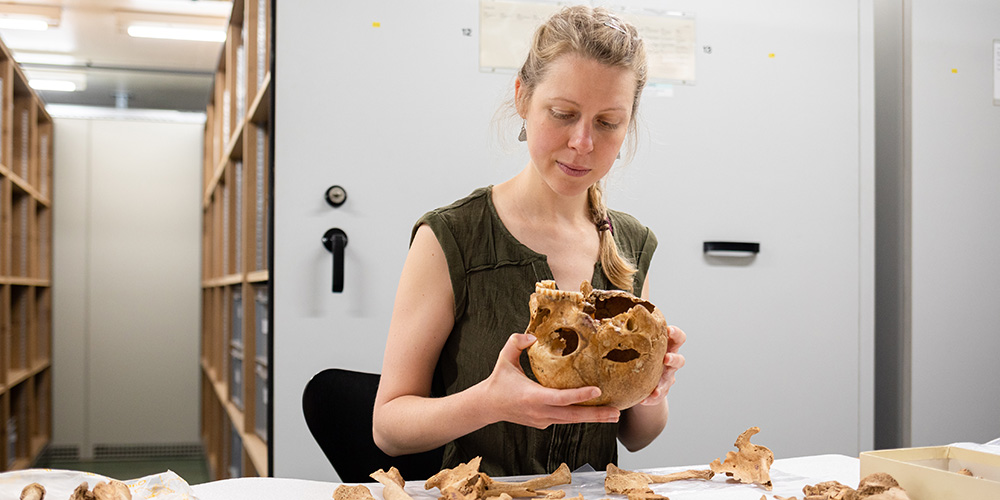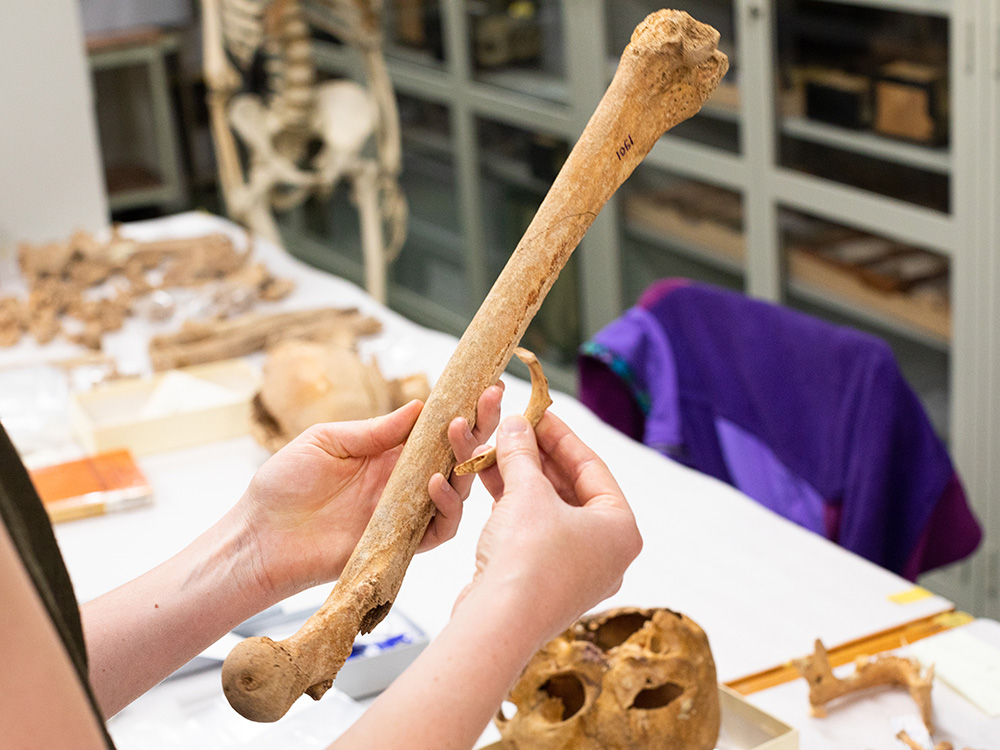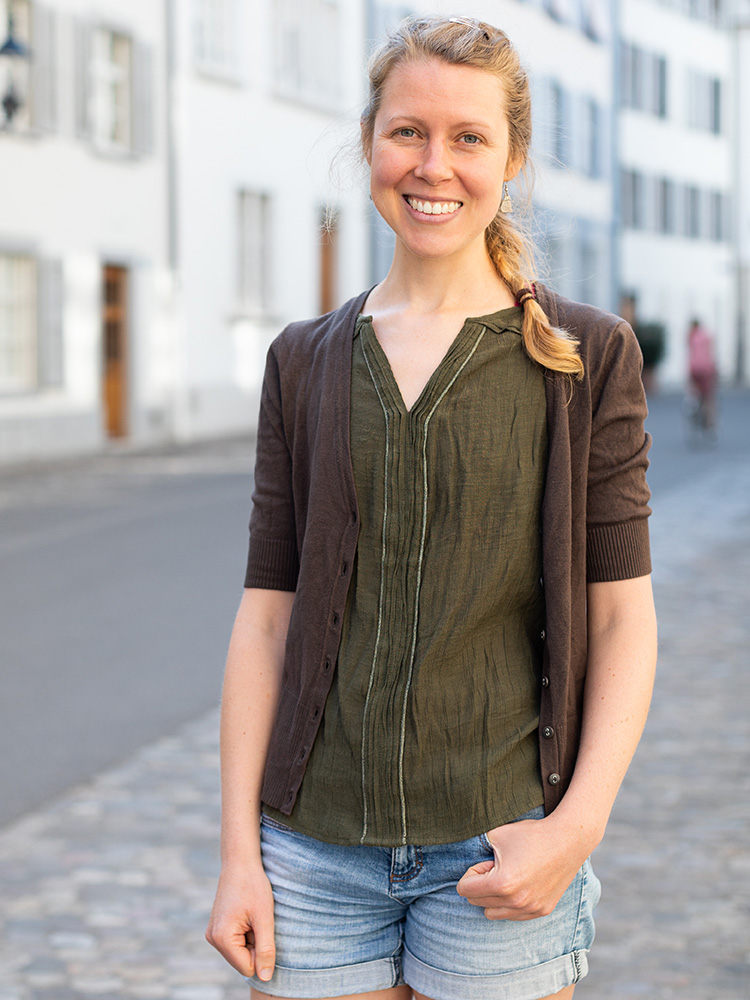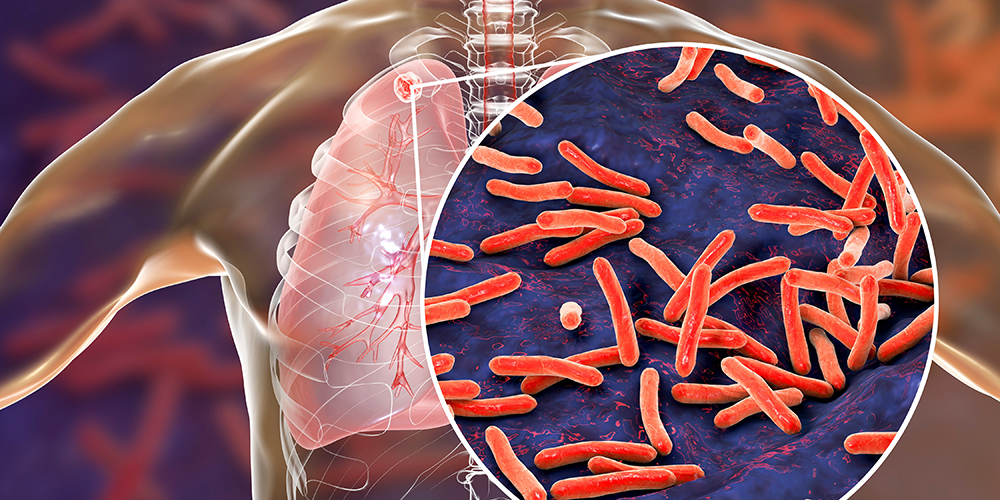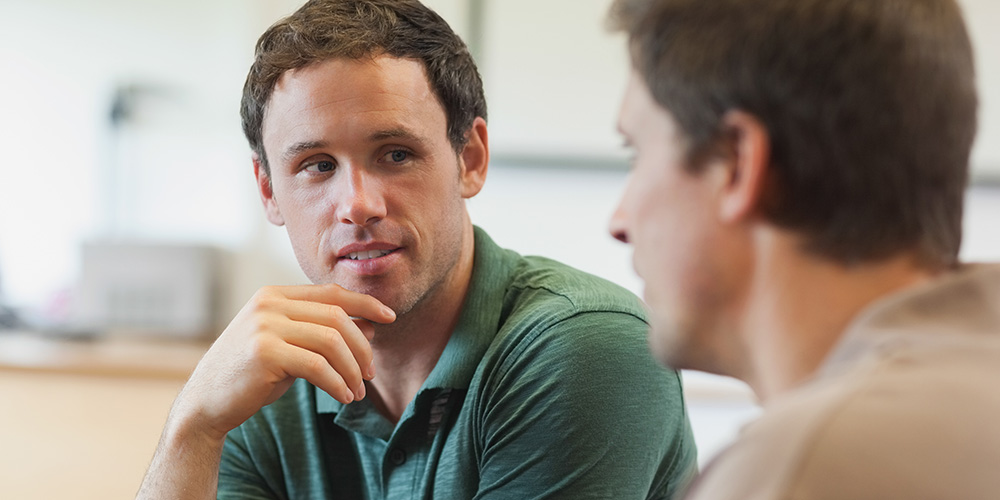In Focus: Margaux Depaermentier analyzes teeth from the early Middle Ages
Who lived in the Basel region around 1,500 years ago? Where were they from and what did they eat? Archaeologist Margaux Depaermentier is looking for answers. One place she is finding them is in the tooth enamel of skeletons.
25 July 2023 | Noëmi Kern
Margaux Depaermentier is holding a skull in her hands that still contains some teeth. It belongs to a well-preserved skeleton that is lying on a table in the basement of the Basel Natural History Museum. The skeleton is from a burial ground near what is now Kleinhüningen, on the right bank of the Rhine in Basel, where Christians were buried from the middle of the 5th century CE into the 7th century CE.
Depaermentier is particularly interested in the teeth: she can use them to draw conclusions about the individual’s living conditions. “Teeth can be considered a kind of living fossils,” says the archaeologist. They form in childhood and remain stable throughout the course of life; unlike bones, they are not constantly renewed and they also do not become porous when they are buried underground for centuries. For this reason, the isotope ratios contained in the tooth enamel can provide researchers with reliable information.
Basel as a melting pot of various cultures
In connection with research for her dissertation in Provincial Roman Archeology, Depaermentier is examining early medieval social structures in Basel. She is also involved in the project, “Mobility, Social Structures, and Ways of Life in Late Antique Basilia and Early Medieval Bazela,” which is funded by the Swiss National Science Foundation. The researchers hope to form a picture of how people lived in the Basel region between 300 and 700 CE and where the people living on both sides of the Rhine were from. One hundred to 150 skeletons from the Basel region are providing the requisite data.
This particular time period is especially interesting for two reasons: first, it was the time of the so-called “Migration Period,” with extensive movement of people groups. Second, between 260 and 475 CE, the Rhine at Basel was the Limes – the border between the Roman Empire and barbarian – that is, non-Roman – territory. “People with different cultural and political backgrounds lived in close proximity to one another,” Depaermentier says. Accordingly, there were many small settlements in the region with corresponding cultural diversity. According to written sources, the Kleinhüningen area was home to Alemanni, Danube Suebi, and, from the 6th century onward, Franks as well. “However, we assume that there were networks and also cultural exchange among the various settlements.”
This makes Basel a good place to test questions that archaeologists are asking throughout Europe: How can we define early medieval mobility and political/cultural changes? To what extent did living conditions within the Roman Empire differ from those outside its borders?
The 28-year-old researcher explains all of this with lively enthusiasm as she turns the bones over in her hands to examine them more closely. This skeleton from Kleinhüningen has survived almost entirely intact. That is rare for this time period in Basel. Depaermentier’s fascination with her research is palpable. “I’m not just interested in the data and in analyzing it, but also in further developing the methods and applications connected to it.” She also finds the collaboration with other disciplines exciting – especially environmental sciences – and she feels strongly about the importance of sharing her findings with the public. “In this way, we researchers can give something back to the people,” she says. This was also one of her motivations for participating in the Stadt.Geschichte.Basel project. “People are interested in their own history – in their roots,” says Depaermentier, who grew up in Alsace herself. She studied in Paris, Strasbourg and Freiburg im Breisgau.
Tooth enamel tells stories from the past
Researchers from a variety of disciplines and institutions work together on the project. For example, an anthropologist from Integrative Prehistoric and Archaeological Science (IPAS) at the University of Basel is analyzing the skeletons, radio carbon dating by ETH Zurich is providing further information about approximately when the people died, and a geographer from the University of Kiel is modeling land use strategies of the time using climate and environmental data. This is important in order to be able to estimate where and how people farmed, for example. The carbon isotopes also provide indicators of which plants were used as food.
Margaux Depaermentier herself is measuring the isotope ratios that are preserved in the tooth enamel. In the course of her master’s studies, she began working independently with the methods of isotope analysis – but only in theory. After graduating, a laboratory internship with IPAS provided her with more practical experience, eventually leading to her dissertation project. For her analysis, she grinds the teeth into powder and examines them in the IPAS lab. Information about an individual’s origins is provided primarily by the chemical element strontium, which is deposited in bones and teeth, because its isotope ratios depend in part on the rocks in the environments. Carbon isotopes in the tooth enamel can lead to conclusions about food. “For example, if a person had a certain grain in their diet that could not be farmed in the Basel region because the climate wasn’t suitable, it’s possible that this individual migrated to the area,” Depaermentier explains. “Millet, for example, tends to grow under different climatic conditions than wheat or rye.”
Migration also led to exchange between the local population and new arrivals. Migrants were buried according to the local customs, for example. DNA analyses provide information about the origins of individuals, but they also shed light on genetic kinship relationships. If thorough ethnic mixing took place, one can assume that there was successful integration.
By bike through Europe
Margaux Depaermentier is nearly finished with her dissertation: her defense is scheduled for September. Before then, though, she and her partner plan to undertake a trip of their own – by bicycle. “Probably over the Alps to Italy first, and then maybe to Hungary and back via the Czech Republic, where we lived together for a while.”
For Margaux Depaermentier, getting outside and moving is an important counterbalance to her work in the lab and on the computer. She also recently joined the University of Basel’s Science Slam Club. This humorous approach to communicating her research allows her to combine her other great passion – theater – with bioarchaeology.
She intends to remain loyal to science after finishing her dissertation, with initial plans to continue her work on the project as a postdoc. There is plenty to do: in a later phase of the project, the researchers intend to study animal skeletons that were buried along with the humans as gifts of food. “If animals weren’t imported, and so grazed in the area around the settlement, their isotope ratios will provide a picture of local conditions,” Depaermentier explains.
In Focus: the University of Basel summer series
The In Focus series showcases young researchers who are playing an important role in furthering the university’s international reputation. Over the coming weeks, we will profile academics from different fields – a small representative sample of the 3,000+ doctoral students and postdocs at the University of Basel.

